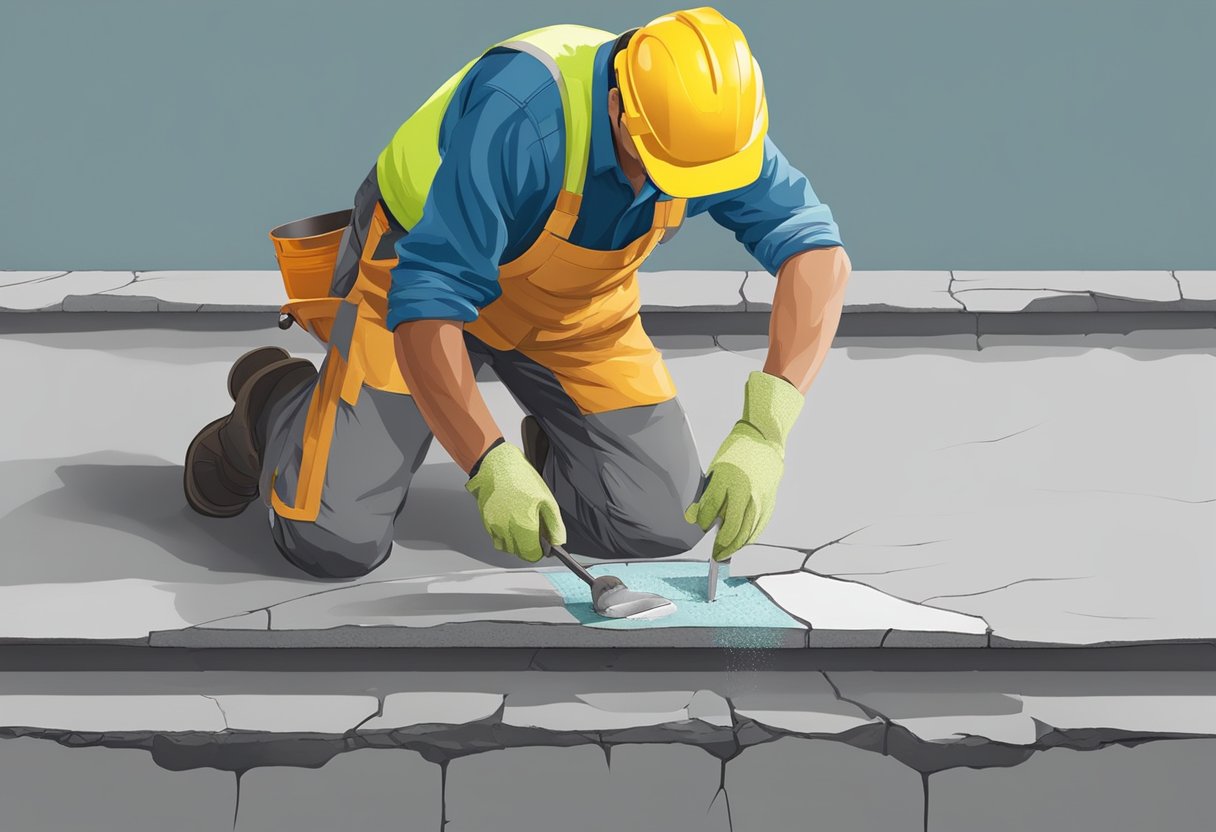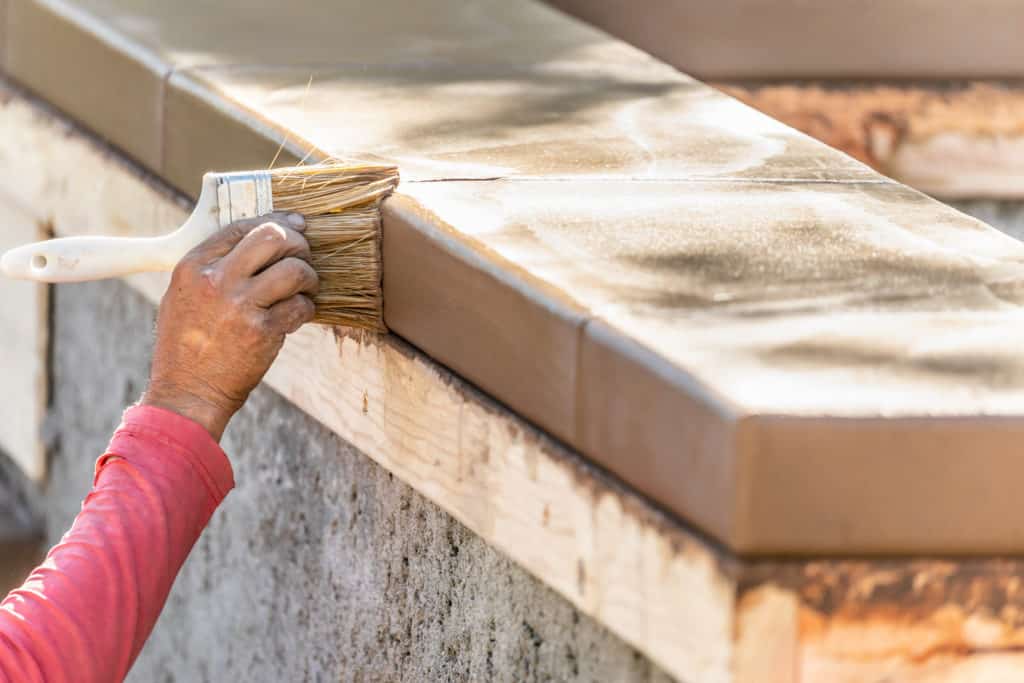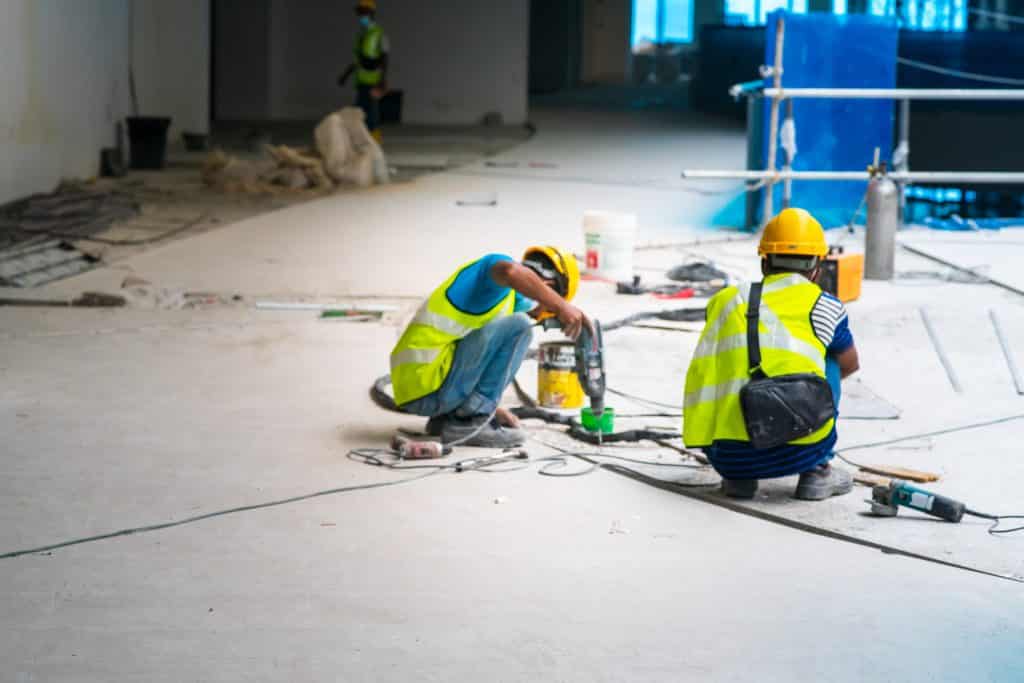Cracks in concrete slabs are a common issue that can occur due to various factors such as ground movement, freeze-thaw cycles, and wear and tear over time. These fissures can compromise the structural integrity of concrete installations, and even though concrete is a durable material, it is not immune to damage. Identifying the type of crack and understanding its cause are critical first steps in the repair process. Small, hairline cracks can often be addressed with simple DIY solutions, while larger, more complex cracks may require professional intervention.

Repairing cracked concrete is essential to prevent further deterioration and to maintain the safety and aesthetics of the structure. There are several methods to fix cracks in concrete, depending on the size and scope of the damage. Smaller cracks can typically be filled with a concrete caulk or liquid filler, whereas larger ones might need a more robust repair involving epoxy, latex, or a concrete patching compound. The choice of the repair method also depends on the future load the slab will bear and whether additional reinforcement is needed to prevent recurrence.
Ensuring the longevity of a concrete slab repair involves not only addressing the visible damage but also taking proactive steps to minimize future cracking. This might include proper curing of the concrete, control joint placement, and even applying a waterproof sealant to protect against moisture intrusion. By selecting the appropriate repair technique and implementing preventive measures, one can successfully restore the appearance and functionality of a concrete slab while extending its service life.
Understanding Concrete Slab Cracks

Concrete slab cracks can compromise both the aesthetic appeal and structural integrity of slabs, hence understanding their nature, causes, and the criticality of their widths is invaluable for effective management and repair.
Types of Concrete Cracks
Concrete slabs may exhibit various types of cracks, with common distinctions being drawn between hairline cracks and large cracks. Hairline cracks are fine and usually less than 1/8 inch wide, often resulting from the natural curing process of concrete. On the other hand, larger cracks, exceeding 1/8 inch in width, may signal more significant issues like structural damage or a compromised foundation.
- Hairline Cracks: Often benign and do not typically affect structural integrity.
- Large Cracks: May indicate deeper issues, requiring professional assessment.
Causes of Cracks
Several factors contribute to the formation of cracks in concrete slabs. Settling soil beneath the slab can create uneven support, leading to cracks. Variations in climate can cause expansion and contraction in the concrete, also leading to crack formation. Additionally, external factors like trees with invasive root systems or improperly directed sprinklers can affect the moisture content of the soil, further exacerbating the potential for cracking.
- Settling Soil: Uneven foundations due to soil movement.
- Climate: Changes in temperature and humidity can expand or contract the concrete.
- Trees and Sprinklers: Roots and water can alter the soil’s consistency and moisture levels.
Significance of Crack Width
The width of a crack is pivotal in determining the urgency and type of repair necessary. Hairline cracks are typically monitored, while wider cracks may necessitate immediate intervention to maintain structural integrity. Concrete specialists might employ different repair methods depending on the crack width to ensure the longevity and safety of the slab.
- Less than 1/8 inch: Generally monitored for changes but not repaired immediately.
- 1/8 inch and greater: Often require repairs to prevent further structural damage.
Tools and Materials for Repair

Before embarking on concrete slab crack repair, it is vital to have all the necessary tools and equipment on hand. The success of your repair work hinges on choosing suitable materials and utilizing the correct tools.
Choosing the Right Repair Materials
To effectively repair cracks in concrete slabs, selecting the appropriate repair materials is critical. For smaller fissures, a concrete crack filler or masonry caulking material can serve well, especially when used in conjunction with a caulk gun for precise application. Wider or more substantial cracks may require a combination of sand and concrete mix or a specialized patching compound. For deeper cracks, inserting a backer rod provides support and reduces the quantity of filler needed.
- Concrete Mix: An all-purpose material perfect for filling larger gaps.
- Concrete Crack Filler: Ideal for small, hairline cracks.
- Backer Rod: A foam material that fills deep crevices to reduce the amount of filler used.
Essential Tools for the Job
While the materials mend the crack, the tools ensure the repair lasts. Starting with a chisel and hammer, one must carefully chip away any unstable concrete within the crack to create a clean area for the filler to bond to. A wire brush can then be employed to scrub away loose debris and dust. To clear out finer particles, a shop vac or broom is essential for a dust-free surface.
- Hammer and Chisel: For removing cracked or loose concrete sections.
- Wire Brush: To clean the crack’s edges and interior.
- Shop Vac/Broom: To ensure a dust-free environment for the repair material to adhere to.
- Trowel: For applying and smoothing concrete mix or patching compound.
- Putty Knife: Useful for applying and leveling caulk or filler.
- Caulk Gun: Necessary for injecting filler material into the crack.
Incorporating these specific tools and materials into the repair process will lead to a more durable and aesthetically pleasing repair of the concrete slab.
Repair Techniques

Identifying the right repair method is crucial to addressing the different types and severities of concrete slab cracks effectively. Each type of crack requires a specific approach to ensure lasting repair.
Repairing Small to Medium Cracks
Small to medium concrete cracks, typically less than a quarter inch wide, can be effectively managed with concrete crack fillers or patching compounds. These materials are suitable for DIY repairs and can seal the cracks to prevent further damage. A concrete patching compound can be applied to small cracks after ensuring the area is clean and free from loose debris. For slightly larger cracks, professionals might opt for epoxy or polyurethane injections, which provide a strong and watertight seal.
Repairing Wide and Large Cracks
When dealing with wide and large cracks, more extensive repair methods are required. These cracks may indicate underlying issues such as settlement or heavy structural stress. Filling these cracks often involves using a quick-setting concrete mix or specialized concrete repair products. For professional repairs, routing and sealing may be performed to create a uniform and clean area to which the repair material can securely bond.
Addressing Structural Damage
Structural damage is the most severe category of concrete damage and must be addressed immediately to maintain the integrity of the structure. Repair techniques for structural damage often involve reinforcing the slab with new concrete, which can be achieved by using rebar or wire mesh. In more serious cases, professionals may employ methods such as slabjacking or piercing to correct underlying settlement issues. Control joints might be added or extended to tackle future stress points and minimize the risk of new cracks forming. It is recommended to consult with a structural engineer to assess and repair structural damage to concrete slabs.
Preventive Measures and Maintenance
Ensuring the longevity and integrity of concrete slabs involves proactive steps. Effective drainage, use of sealants, and regular maintenance are vital in avoiding cracks and other common issues.

Improving Drainage and Sealant Application
Good drainage is essential to protect a concrete slab from water damage, which can cause cracking and other forms of deterioration. Steps should be taken to ensure that water is directed away from the concrete surface efficiently.
- Drainage: Incorporating proper sloping techniques ensures water flows off the slab surface, preventing pooling. Installation of gutters and downspouts should be done in such a way that water is channeled away from the concrete, thereby reducing the risk of damage.
- Sealant Application: Applying a chemical sealer can shield the concrete surface from moisture, chemical exposure, and freeze-thaw cycles. Sealers must be chosen based on the concrete type and environmental conditions. They should be reapplied periodically, depending on the product specifications and wear.
Regular Inspection and Maintenance
Concrete slabs require consistent monitoring to identify and address early signs of damage, which can prevent the need for more extensive repairs.
- Inspection: Visual inspections are recommended bi-annually to check for new cracks, changes in existing cracks, and signs of surface wear. Paying attention to the edges and joints of the slab is key, as these areas are prone to damage.
- Maintenance: Any identified issues should be promptly dealt with to prevent further deterioration. This includes cleaning out joints, repairing small cracks with appropriate fillers, and reapplying sealant as needed. Regular cleaning of gutters and downspouts is also necessary to maintain effective drainage.
Common Questions and Professional Guidance
This section is dedicated to addressing some of the most commonly asked questions about concrete slab crack repair and the considerations involved in choosing between DIY methods and professional services.
DIY vs. Hiring a Professional
DIY Methods:
- Pros: Cost-effective, immediately actionable
- Cons: Risk of improper repair, potential lack of tools and materials
Professional Services:
- Pros: Expertise in concrete repair, guaranteed stability, and durability
- Cons: Higher cost, scheduling required
When dealing with crack sealing in a concrete foundation, one must weigh the complexity of the issue against their own skill set. DIY approaches can be suitable for minor cracks that don’t threaten structural integrity. However, for significant issues such as foundation failure or deep basement floor cracks, hiring a professional is recommended due to their advanced techniques and materials which ensure long-lasting repairs.
FAQs in Concrete Slab Crack Repair
Q: Is crack sealing necessary for minor cracks?
- A: Not always. Minor surface cracks may be cosmetic and not indicate deeper issues.
Q: What methods do professionals use for crack repair?
- A: Professionals commonly use epoxy injections or polyurethane foam for a high-strength bond that restores concrete’s original strength.
When it comes to concrete slab crack repair on a foundational level, swift action is often essential to maintain a home’s structural stability. Professional assessments can determine if a crack is dormant or active, dictating the suitable repair method. It is important to measure crack widths accurately, as a misjudgment could lead to misapplication of repair techniques, potentially escalating the problem.
For more in-depth guidance, reading expert publications, such as those from the American Concrete Institute, can shed light on the best practices in concrete repair. Additionally, resources like Concrete Network provide insights into the typical methods and solutions used by professionals in the field.

 CALL US NOW
CALL US NOW



